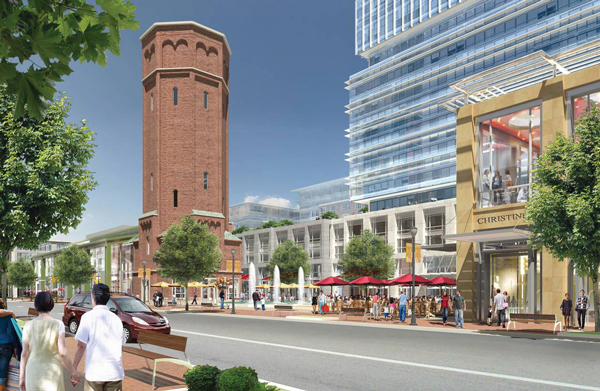For as long as many can remember, NIMBYism has been the dominant attitude among Long Island communities where developers have sought to launch their multifamily projects. Complaints of increased traffic and glutted school systems have long been the stated fears of communities that shunned many projects that would bring a greater density of residents to their town. But there’s one thing that’s finally moving the needle towards project approvals, according to advocates: transit-oriented development.
“There’s more community support for these projects than there had been in the past,” said Eric Alexander, director of downtown planning nonprofit Vision Long Island, based in Northport. “People want to see their downtowns revitalized and people want housing options.”
Alexander said supporters of multifamily, particularly for transit-oriented development, or TOD, often outnumber opponents at hearings.
TOD is commonly within walking distance of train stations and public transit hubs and is often eligible to receive tax abatements through industrial development agencies, such as pilots or payments in lieu of taxes, sales tax exemptions and other incentives.
“It was a really good year for multifamily,” Alexander said of what he describes as a sea change. “We now have 40-plus developers on Long Island that do multifamily development in downtowns and transit-oriented development.”
From 2006 to 2019, 14,500 downtown and transit-oriented units of residential, primarily apartments with a few hundred condominiums, were approved, he said. Of those, 9,700 were or are currently being built with little more than 1,000 units approved in 2019.
“2019 was a banner year for multifamily in the number of projects that opened and the number planning to be opened,” said Mitch Pally, CEO of Long Islanders Builders Institute. “The rental market is very strong at the generational age below 25 and above 55 as people downsized.”
Demand to live in downtowns is growing, spurring multifamily construction, Pally said, citing Mineola, Farmingdale, Westbury, Greenport, Port Jefferson and Ronkonkoma with the Ronkonkoma Hub as examples.
“We have a large number of projects out there being reviewed or planned. I don’t see any reason why the demand won’t be as strong in 2020 as in 2019,” Pally said. “The demand for rental housing on Long Island is significant. If the finances work, they can be very profitable. The banks realize that rental housing on Long Island is a very profitable endeavor”
Over the next 10 years, Alexander said he expects 15,000 units will go through the approval process for Long Island downtowns, but the biggest change may be from a single project already approved.
Heartland Town Square, a 2,500-unit residential project along with 1 million square feet of commercial in its first phase, has been approved in Brentwood on the former Pilgrim State grounds but not yet built.
Alexander called Heartland, being developed by the Wolkoff family on a 452-acre property, “the biggest approval since Levittown.”
“I believe it’s going to happen,” Alexander said of Heartland. “They have the resources.”
Heartland last February filed a $15 million lawsuit in an effort to compel Suffolk County to connect the project to the Southwest Sewer District.
The company argues that the public works commissioner can negotiate a deal that agencies would negotiate without requiring the approval of the Suffolk County Legislature.
